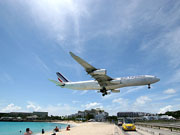Why take a Professional Pilot Course (CPL FAA)?
Reason number one, if you own an aircraft, this reduce the insurance premium! The more you are qualified and trained, the less you are likely to exceed your limits and risk an accident.
Reason number two: improve continuously! This is one more step to achieve when you have finished your IFR and flying in clouds has become your daily routine. You want to see what is beyond, improve the control you have of your aircraft, and successfully fly with tolerances that are closer to zero. Especially if it's been a long time since you flew with an instructor, this will detect the bad habits you may have adopted over time, and correct them for your greatest achievement in terms of safety.
It is also important to note that this pilot license is available in two versions, single and multi. This means that if you pass your FAA CPL Multi-Engine, you can not give your resume to a company that flies Pilatus (single) unless you take a single-engine add-on. In this case, a Cessna 172 will be enought for the test.
An accessible license
The Single-Engine FAA CPL
If we were to summarize this license in only one word it would be: FUN! During this training course you will learn a series of maneuvers that are very pleasant to perform when they are mastered, which still requires a very precise control of the flight. You will learn to perform lazy eights, chandelles, steep turns, steep spiral and to master a new concept: the pivotal altitude while practicing eight on pylons. You will improve your capacity to land (very!) short, fly at (very!) slow speeds, and so on... In short, you will improve your finesse steering maneuvers totally out of classical European training.
The Multi-Engine FAA CPL
This license is very similar to the Multi-Engine Rating FAA at a private pilot level, the only thing that changes is that the tolerance is considerably reduced. You will learn to deal confidently with engine failures, and to demonstrate by yourself the minimum control speed with one inoperative engine (Vmca), down to the limit before losing control (but no, we won't spin with an engine shut down!). Much theoretical explaination of all the aerodynamics of twins, what factors affect the minimum control speed, how does a variable pitch propeller, flaps and retractable landing gear, or even a turbo work.









